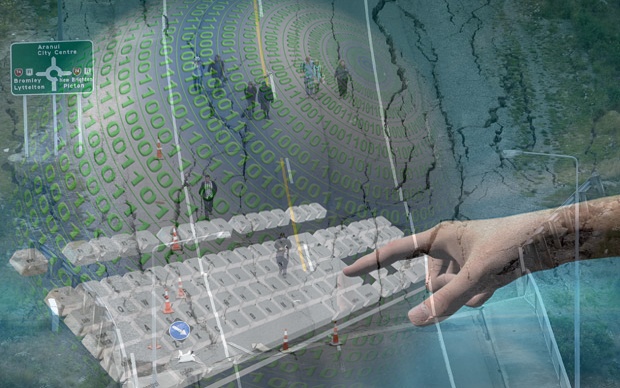E-newsletter : No matter whether it was the Wenchuan earthquake in 2008 or the Ya'an earthquake this year, it caused huge property losses and casualties. When encountering such natural disasters, how to earn more time for search and rescue is crucial. It is undoubtedly a matter of benefiting the country and the people to predict the earthquake in advance by using the methods of identification and tracking, positioning monitoring, and tracking records of the Internet of Things technology, supporting emergency search and rescue, and realizing dispatch and command. The Internet of Things technology can effectively help us reduce the losses caused by earthquakes and other natural disasters. One of the important development fields of the Internet of Things technology in the future will inevitably be "earthquake resistance", or even predict earthquakes? The role of Internet of Things technology in earthquake prevention So far, there is no good way to predict earthquakes in advance in the world, but the scientific community is working hard to overcome difficulties, hoping to early warning the arrival of earthquakes, so as to quickly evacuate people and property. With the development of sensors and IoT technologies, The Internet of Things and sensors can also serve for earthquake resistance. It is understood that British researchers use RFID and sensors to monitor houses in the earthquake, which uses the Internet of Things technology. They called the prototype that had been built in Greece the autonomous house. This kind of house has specially designed gap spaces in the wall, and the wall body is added with materials that can become fluid under strong pressure. If the pressure is caused by the earthquake, the fluid will flow back into the gap without affecting the solid wall. As a result, the house still exists, but it may move its location. If the building does not collapse, the data collected by RFID and sensors will be used to determine the position offset. In addition, RFID tags and sensors in the building can jointly build an alarm system to warn of an upcoming earthquake. Application of Internet of Things technology in earthquake shelters In Japan, RFID tags are attached to evacuation roads, so that asylum seekers can clearly know the specific location of safe evacuation sites through portable devices, which plays a good guiding role. In addition, it is used to determine the identity of the victims, statistics of the injuries, record management of the original health information of the victims, movement and tracking of the location of the victims, and management of the distribution of disaster relief materials on the spot. And make full use of the functions of RFID, geographic information system (GIS), global satellite positioning system (GPS) to realize the functions of identifying and tracking people, objects, positioning and monitoring, tracing records and so on. Internet of Things technology wins time for emergency rescue after disaster If someone is buried in the rubble, the trapped person can provide the search and rescue personnel with their specific location information through the mobile phone with built-in RFID tags, so that the search and rescue personnel can start the rescue at the fastest speed. When shipping materials after the disaster, the GPS module can also obtain the coordinate information of the materials according to the positioning function of the satellite, which improves the efficiency and accuracy of coordinate information collection. In earthquake emergency command, mobile GIS, GPS and wireless communication technology can also be combined to integrate various information resources of the emergency rescue system into the mobile terminal, which greatly improves the flexibility, real-time and accuracy of the emergency rescue system. In an emergency, the mobile terminal is carried by the rescuers to provide the necessary assistance to quickly reach the scene of the disaster area, reduce the expansion of the disaster, and provide all kinds of basic information required by the on-site command. Through the real-time interaction between the GPS chip and the satellite, the specific coordinates of the materials are obtained, and then sent to the single chip microcomputer in the RFID reader through the serial port interface for processing, so as to be transmitted to the data center server through the wireless network in the next step. Editor's comment : In the event of a natural disaster, the Internet of Things technology can effectively realize the identification, tracking, location monitoring and traceability records of people and objects, and win time for search and rescue. Through its application in natural disasters such as the Great Japan Earthquake, China's "5-12" Wenchuan Earthquake, Ya'an Earthquake, and Zhouqu Mudslides, the Internet of Things has become an important technology for earthquake relief. Today, with natural disasters becoming more and more frequent, the future Internet of Things technology will inevitably minimize the extent of disasters. Of course, we hope that the future Internet of Things technology can predict earthquakes as soon as possible. In this way, when some earthquake precursors are sensed, the information can be fed back to the relevant departments in a timely manner, thus radically reducing unnecessary casualties and losses. To what extent will the future Internet of Things technology develop? People all over the world are expecting IoT technology to bring more well-being to mankind.
Our Led Chess is good in quality and competitive in price. We are manufacturer and supplier of Led Chess following your specific requirement. We are looking forward to your E-mail and establishing cooperative relationship with you! We would provide professional Led Chess with good services for you!
We are the professional Led Chess Set manufacturer in China. We can produce Flashing Chess to your requirements. If you want to get more types of Led Chess
Led Chess Set, Flashing Chess, Custom Led Chess AST Industry Co.,LTD , https://www.astsoundchip.com
——All rights reserved by Electronic Fans. Please indicate the source when reprinting!